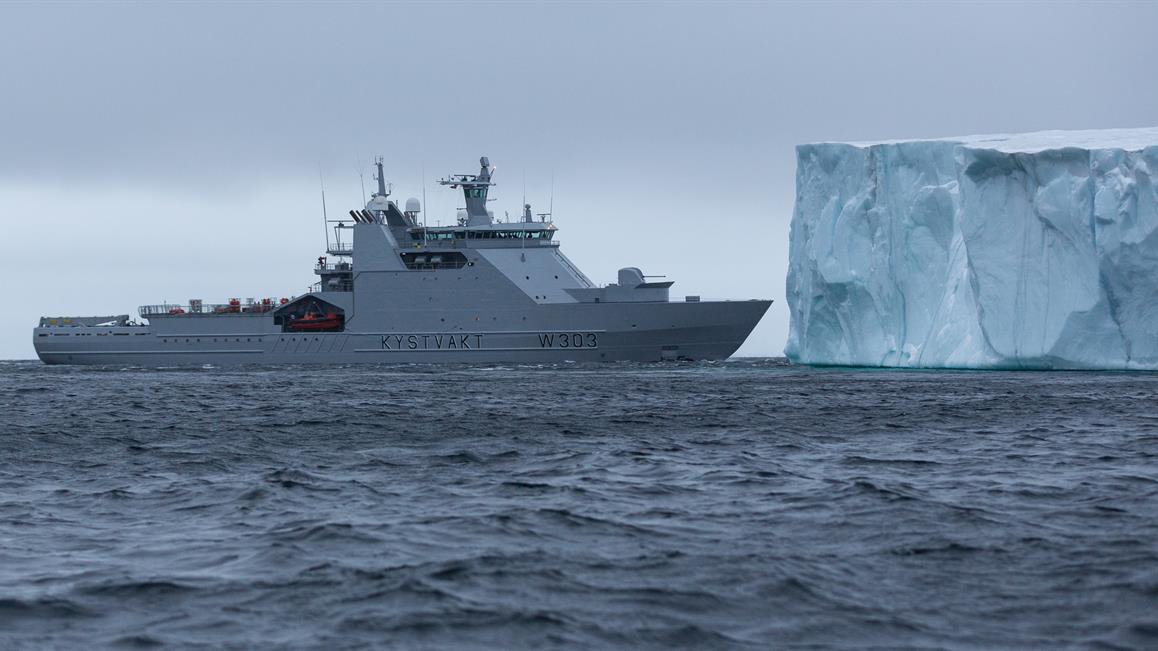Canada's National Shipbuilding Procurement Strategy: New Capabilities for Arctic

KV Svalbard. Photo: Norwegian Armed Forces
The Canadian government recently announced the results of the bidding process to construct vessels for the National Shipbuilding Procurement Strategy. Canada plans to spend $33 billion on 28 large combat and non-combat vessels over the next 30 years. As part of that procurement the Royal Canadian Navy is slated to receive six to eight Arctic Offshore Patrol Ships (A/OPS). The Canadian Coastguard meanwhile will see the addition of a new Polar-class icebreaker in 2017.
The A/OPS are one of the centerpieces of Canada’s Northern Strategy and will conduct armed sea-borne surveillance in Canada’s waters. Currently, the Canadian Navy can patrol the coastal waters of Atlantic and the Pacific, but does not have the capability to effectively patrol the Arctic Ocean. The Navy can only operate in northern waters for a short period of time, and only when there is no ice. The Northern strategy aims to strengthen Arctic sovereignty and protect the region’s environmental heritage.
Canada lays claim to parts of the Arctic, including the Northwest Passage, which could become an important shipping route as sea ice continues to recede. The United States and the EU, among others, contend that the passage is an international strait and should be considered international waters.
The new ships will be based in Halifax, Nova Scotia as well as Esquimalt, British Columbia. In order to accommodate the vessels and their operation the existing infrastructure will be expanded and upgraded. In addition a refueling and docking facility will be constructed in Nanisivik, Nunavut.
According to the Canadian government the “ships will have sufficient flexibility to operate independently and effectively in Canada’s Exclusive Economic Zone (EEZ), including such diverse environments as the Canadian Arctic, the Grand Banks of Newfoundland and off the Northwest coast of the Queen Charlotte Islands. The ships would also be capable of navigating the St-Lawrence River on a year-round basis and berthing in Quebec City.”
Over the course of their 25-year lifespan the A/OPS will cost $7.4 billion – $3.1 billion for construction and $4.3 billion for operation and maintenance. The Canadian government’s plan to obtain A/OPS follows on the heels of similar vessels launched in Norway and Denmark. The Norwegian Coast Guard icebreaker and offshore patrol vessel KV Svalbard entered into service in 2001. The Royal Danish Navy has operated a smaller version of A/OPS, the Knud Rasmussen, since 2008. The Canadian vessels’ area of operation will be at great distances from their homeports, requiring the ships to be able to sustain operations for up to four months and at least 6800 nautical miles. From Halifax to the refueling station in Nanisivik the vessels will have to travel nearly 3,000 nm, the same distance as crossing the Atlantic Ocean.
The vessels’ thick ice-strengthened hull will allow them to operate year-round in medium first-year ice and ensure their own mobility without the need for icebreaker assistance. The vessels will, however, not provide icebreaking services to other ships. Critics point out that A/OPS are significantly heavier than non-Arctic vessels of similar size. While the ice-strengthened hull design is required for operation in the Arctic during the summer months, the added weight makes them less efficient and more expensive to operate during the rest of the year.
The Canadian Coast Guard is to receive a new Polar-class icebreaker, the CCGS John G. Diefenbaker, in 2017 giving the agency increased coverage in the Canadian Arctic and allowing it “to operate during three seasons in the Arctic, over a larger area and in more difficult ice conditions than is currently possible.” The vessel will be 120-140 meters in length, carry 100 personnel, and provide accommodation for 25 additional people, e.g. scientists and researchers. Construction on the vessel is scheduled to begin in 2013 and the Coast Guard anticipates final acceptance for late 2017. It will be the largest and most powerful vessel ever owned by the Canadian government.
The investments into Arctic infrastructure and vessels come in the light of a recent public opinion poll which concluded that “many Canadians felt that Arctic sovereignty [isn’t] as great of a priority as the government says it is.” The majority of respondents agreed Arctic sovereignty was important, but stated that it should not trump other issues such as health care.